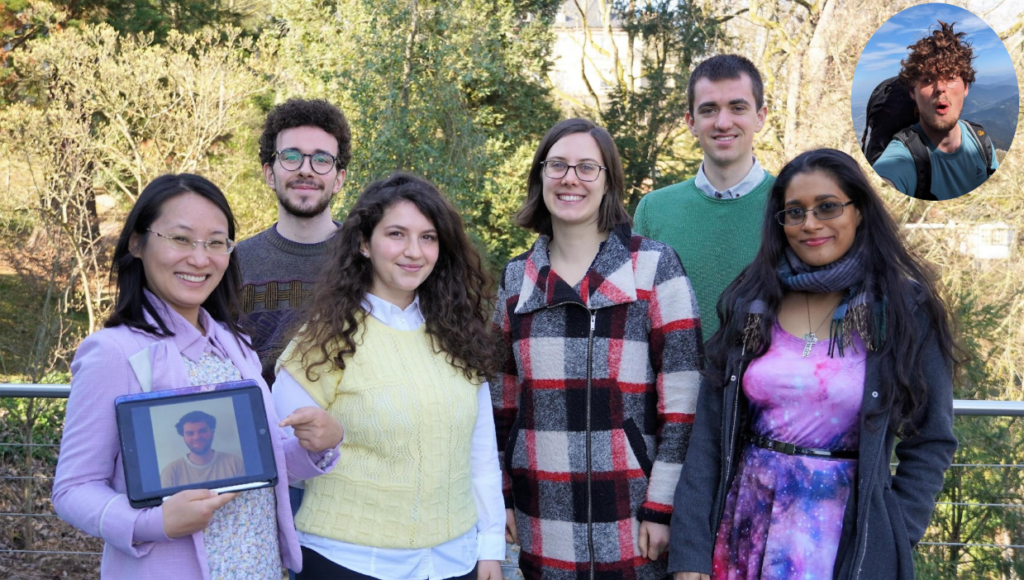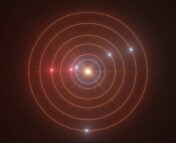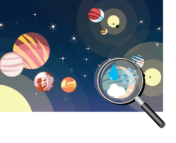Ever wondered about why your planet hosts all the interesting and sometimes weird living stuff (yes, even you, dear reader)? It comes down to our home planet, and by extension us too, being extremely lucky; Earth is habitable! You might’ve heard about the habitable zone around a star, where water tends to be in liquid form. Too close to the star and all your water boils away, too far from the star and everything freezes over; both scenarios aren’t exactly great for life as we know it to form. The ‘just right’ distance from the star has water in liquid form, also aptly called the Goldilocks zone. Liquid water might not even be necessary at all, but from personal experience we’re kind of primed to look for it.
Now, Earth’s biosphere is the product of far more than just being in the habitable zone however (see Venus being a scorching hellscape and Mars being a frozen desert, for example, despite both being in the Sun’s habitable zone). There’s stuff like the planet’s magnetic field, the consistency of the atmosphere and external factors to consider too; giant rocks slamming into your planet can be slightly unfavorable, ask the dinosaurs. Weirdly enough, once life’s present, it can change its planet’s conditions as well. A while ago, there was a mass extinction earth caused by cyanobacteria. Sadly, the current way we live on our planet is leading towards a current mass extinction as well. Although our planet and life on it has some buffers for a changing climate, habitability is a very delicate balance, one we really shouldn’t play around with. Luckily, making a game on habitability is something you can and should play around with!
Whodunnit, Howdunnit, Whydunnit?

Since there’s so much that comes into the habitability of a planet, this is an amazing topic to look into. That’s why some researchers at the Heidelberg Institute for Theoretical Studies (see Fig. 1) combined their love for our planet with their enthusiasm for playing board games to develop Habitable. The gist of the game is this: start from a lifeless –uninhabitable, that’s right– piece of rock and, with a series of events, make it as habitable a planet as possible and keep it habitable.

It starts off with picking and migrating your planet (or planets, if you can deal with the extra bureaucratic overhead) to the habitable zone around one of the stars in the game, see Fig. 2. Once it’s in a more or less good position you’ll need to play action cards to make your planet more favorable for life. These action cards you get at random or you can even buy them from the (Galactic?) market; each of them has some, you guessed it, action carried out on your planet (or even on other player’s planets! Playing God can get a little messy..). This can be anything from dropping a big asteroid over showering your planet in meteoroids to a solar storm wrecking your magnetosphere.

Aside from the temperature of your planet, you’ll have to take care of the water present on your planet and its magnetic field so there’s some protection for your atmosphere. By carefully balancing temperature, water and magnetic field, you slowly but surely push your planet towards a paradise for life to flourish, with the planetary summary shown in Fig. 3. You increase the life stats by pumping in bacteria, growing forests or by simply starting your very own Cambrian explosion, amongst many, many other options. Once your planet permits it, life finds a way. Seeing your little planet grow from a sterile desert to a full jungle planet or ecumenopolis or something similar is one of the better things in life.

Once you’ve grown life on your planet(s), you’re not out of trouble though. You’ll need to keep your life from accidentally going extinct. Every so often, an event (an all too nearby supernova, for example) disrupts the peaceful progress of your biosphere and the overall conditions of your planet. That is, unless you have your planet equipped with a shiny, comforting moon to protect it from harm. Having an all too lush planet isn’t all great either, since some pesky advanced civilization might come out of nowhere, start industrializing –it’s a real thing from the game, see Fig. 4– and heating up your planet all the while (seems familiar?). It’s all about maintaining a careful balance.
The game ends when the Galactic Market runs out of things to sell (i.e. the action cards run out), where the player who accumulated most life points wins the game, passing into legend as the Seeder of Worlds (completely optional).
Sign me up, take my money (it’s free though)
Aside from being a great combination of astronomy, scientific accuracy (the game is developed by professional astrophysicists after all) and some good old DIY terraforming, this game is a learning experience as well, where every card has some info text on the bottom (see Fig. 4) to show you what it’s all about. With the fragile balance of keeping your planet habitable, this game also reflects on Earth’s current catastrophic climate change. But, similar to the game, it’s in your hands to do something about it!
And do you know what the best part is? By pure coincidence, Habitable’s just been released online, playable for everyone. Give it a try, it’s amazing (I’m speaking from experience):
Astrobite edited by Olivia Cooper, in collaboration with the Habitable Team
Featured image credit: Habitable Team




